How Climate Affects Pest Risks in Gardens
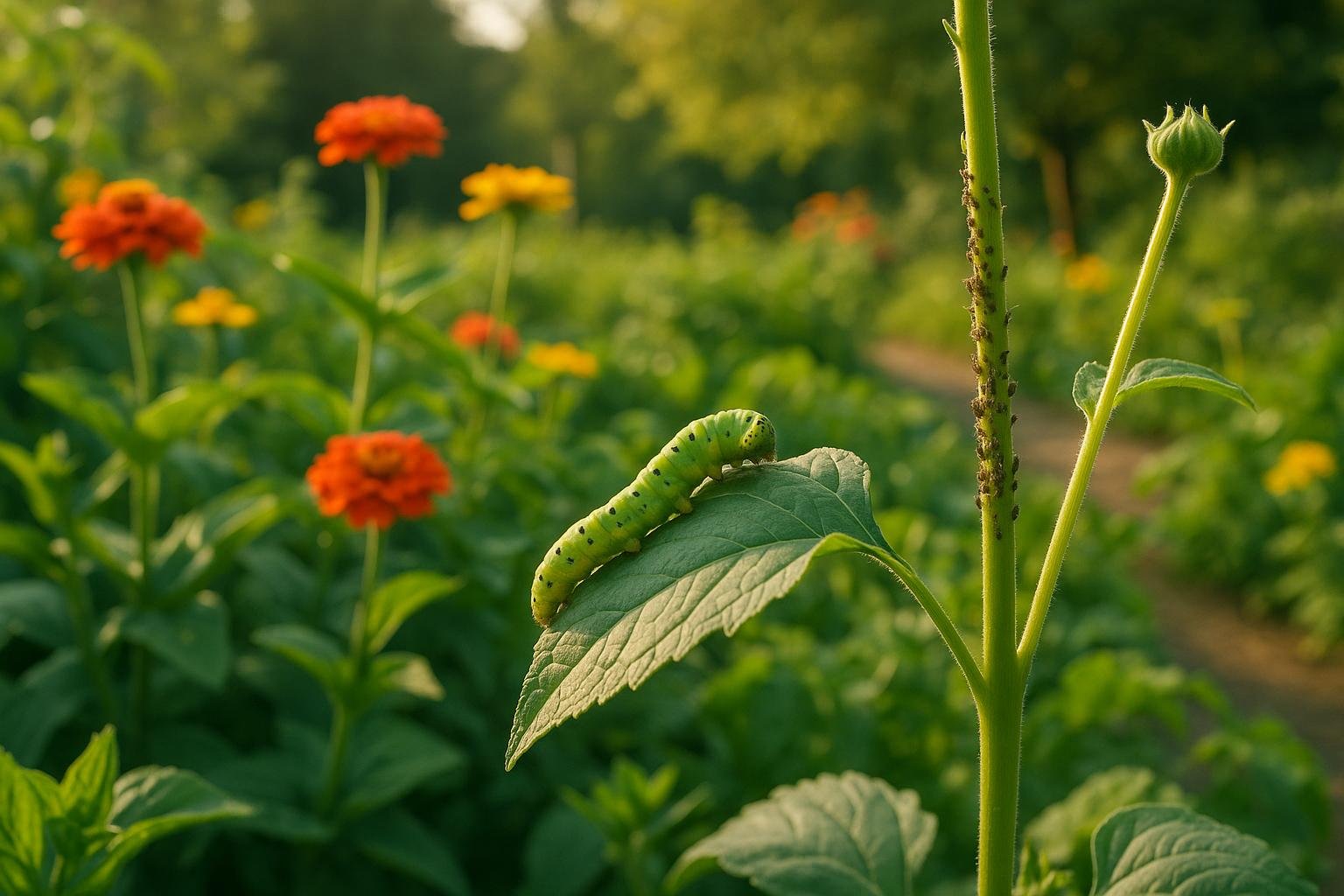
Climate change is reshaping how pests behave, creating challenges for gardeners across the U.S. Warmer temperatures, shifting rainfall patterns, and longer growing seasons are enabling pests to thrive, reproduce faster, and expand into new areas. This means more frequent outbreaks, unfamiliar species, and increased damage to plants.
Key points:
- Warmer winters allow pests to survive and reproduce year-round.
- Changing rainfall creates ideal conditions for pests like mosquitoes and termites, while drought-stressed plants are more vulnerable.
- Pests are migrating northward as temperatures rise, disrupting ecosystems.
- Plant diseases spread faster in humid or wet conditions, compounding the problem.
AI tools, such as pest monitoring systems and predictive models, are helping gardeners tackle these issues by providing real-time alerts, tailored advice, and climate-specific planting strategies. Combining such tools with smart gardening practices - like planting pest-resistant crops and adjusting schedules - can help mitigate these growing risks.
Managing Changing Pest Pressures in a Changing Climate

Climate Factors That Increase Pest Risks
Several climate-related changes are creating ideal conditions for pest outbreaks in American gardens. Recognizing these factors can help gardeners understand why pest problems are becoming more frequent and challenging.
Warmer Winters and Longer Growing Seasons
Historically, cold winters acted as a natural pest control, reducing pest populations. But with milder winters, more pests are surviving through the season. As Sherrie McCleary, a Master Gardener from Franklin County, notes:
"Be aware that insect populations may increase with warmer temperatures and longer growing seasons." [4]
Longer growing seasons mean pests have more time to feed and reproduce. When the growing period extends from early spring to late fall, many insects can produce multiple generations in a single year. Warmer temperatures also speed up their development [4].
Looking ahead, climate models predict that global temperatures could rise by 3.2–7.2°F (1.8–4°C) by the end of the century, which will likely make these trends even more pronounced [1].
Changes in Rainfall Patterns
Shifts in rainfall - periods of intense storms followed by drought - are also affecting pest populations. Heavy rains can push pests out of their natural habitats and into human environments [6]. At the same time, excessive moisture creates ideal conditions for pests like mosquitoes, termites, and rodents to thrive [5].
Research has shown that increased summer rainfall can lead to a surge in certain pests, like wireworms, which move closer to the soil surface under wet conditions. However, small pests such as aphids, mites, and whiteflies can be washed away during heavy downpours [1].
Droughts bring their own problems. Plants under drought stress produce fewer defensive compounds, making them easier targets for insect attacks [1]. Considering that over 80% of global crop production relies on rainfall, these changes in precipitation patterns are critical for agriculture [1]. Additionally, as pests adapt to these shifting conditions, they may seek out new territories.
Pests Moving to New Areas
The combination of warming temperatures and changing rainfall patterns is breaking down historical pest boundaries. Pests are migrating into regions where they were previously absent, taking advantage of new ecological niches [1]. Low temperatures, which once kept certain pests confined to specific areas, are becoming less of a barrier.
For example, pests like the European corn borer and Diamondback moth have expanded their ranges by hundreds of miles. Similarly, studies on European butterflies found that 63% of 35 non-migratory species had shifted their ranges northward by 22 to 149 miles (35 to 240 km), while only 3% shifted southward [1].
These shifts are further accelerated by global trade, which helps pests spread to new regions. As pests move into new areas and host plants shift their growing zones, farmers face increasingly complex pest challenges [1].
Pests and Diseases Made Worse by Climate Changes
The impact of climate change on pests and diseases is becoming increasingly evident. These threats are growing more aggressive, appearing earlier in the season, and causing unprecedented damage. Below are examples that highlight how shifting climates are intensifying pest pressures and plant disease risks.
Pests That Respond to Climate Changes
Warmer temperatures are speeding up pest activity, reproduction, and migration across the U.S. [2].
In California, pests like the codling moth, peach twig borer, and oriental fruit moth are thriving under rising temperatures. Studies reveal these pests are emerging up to 28 days earlier and completing their life cycles faster, with generation intervals shortened by as much as 19 days [3].
"These three pests are notorious for infesting most of the walnut, almond and peach orchards of California, causing extensive damages by reducing quality of fruits and nuts."
- Jhalendra Rijal, UC Cooperative Extension integrated pest management advisor and entomologist [3]
The Northeast is also seeing milder winters and earlier springs, which extend the activity of ticks and mosquitoes throughout the year [7]. Similarly, pests like ants, rodents, and flies are remaining active year-round, leading to more severe infestations [7].
Climate change is pushing pests into areas they previously couldn't survive [12]. Globally, pests and diseases are responsible for about 40% of crop production losses, with damages from pest invasions exceeding $423 billion in 2019 alone [12][13].
The screwworm is an alarming example of how climate barriers are breaking down. Historically, freezing temperatures limited its spread in northern climates. However, as UC Berkeley professor emeritus Gutierrez warns:
"With climate change … if it becomes warm enough, and you can get permanent establishment in those areas, then we got a problem." [11]
Plant Diseases Linked to Climate
As pest populations grow, plant diseases are also taking advantage of shifting climate patterns, particularly changes in temperature and moisture. In fact, moisture plays an even bigger role than temperature in driving plant disease outbreaks [10].
Fungal and oomycete pathogens thrive in high-moisture environments. Diseases like root rot (Pythium and Phytophthora), Myrtaceae rust (Puccinia psidii), septoria leaf blotch (Zymoseptoria tritici), and bacterial leaf blight (Xanthomonas oryzae pv. oryzae) are all exacerbated by increased humidity [9][10].
Many fungal pathogens require at least 4–6 hours of leaf wetness to infect plants [10]. With changing rainfall patterns leading to longer periods of plant wetness, these pathogens are finding more opportunities to spread. For instance, Cercospora zeae-maydis relies on high humidity for extensive sporulation, while elevated soil moisture boosts the virulence of Sclerotinia sclerotiorum and Ralstonia solanacearum [9][10].
The link between climate change and plant diseases creates a troubling chain reaction. Leigh Greenwood, Director of TNC's Forest Pests and Pathogens programs, explains:
"Climate change often makes trees even more susceptible to damage from insects and disease, which reduces a forest's ability to sequester carbon which, in turn, worsens climate change. It's a vicious cycle." [8]
Research shows that forests damaged by insects sequester 69% less carbon, while those affected by disease sequester 28% less. Overall, such damage reduces the carbon sequestration potential of U.S. forests by about 50 million tons of carbon dioxide annually [8].
Additionally, reduced rainfall and prolonged droughts make plants more vulnerable to certain diseases, while fluctuating moisture levels can worsen the spread of others. Whether regions experience wetter or drier conditions, gardeners and farmers are facing heightened disease pressures under changing climate conditions [10].
sbb-itb-4d6a8dd
🚀 Ready to Reinvent Your Garden?
Join thousands of homeowners who have transformed their gardens using our AI design tool. Upload one photo to explore endless possibilities.
Get your AI garden designs →AI Tools for Managing Pest Risks
As climate change ramps up pest pressures across U.S. gardens, AI is stepping in with smart, data-driven solutions. These advanced tools combine real-time monitoring with predictive analytics to help gardeners tackle pest threats before they spiral out of control.
By processing data like weather patterns, pest life cycles, and historical outbreaks, AI systems create predictive models that alert users to potential risks [14]. This proactive approach shifts pest management from reactive to preventative, giving gardeners a much-needed edge in facing climate-related challenges. The result? Smarter monitoring, tailored advice, and garden designs that naturally reduce pest issues.
Real-Time Pest Monitoring and Alerts
Imagine having a 24/7 pest surveillance system in your garden. That’s the promise of AI-powered smart traps. Equipped with advanced sensors, these traps monitor pest activity and send instant alerts straight to your phone. They analyze heat signatures, movement, and even sound frequencies to detect pests before they become a visible problem [14].
Take Trapview, for example. This system uses pheromone traps that snap photos of insects as they’re caught. These images feed into AI algorithms that predict pest spread in real-time [14]. Similarly, FarmSense employs field sensors to gather insect and environmental data, which is then processed by cloud-based AI systems. These systems provide gardeners with precise recommendations, like when to intervene for maximum impact [14].
By combining data from weather satellites, GPS, and historical pest records, these tools offer location-specific insights. For instance, the Random Forest model has demonstrated an 89% accuracy rate in early pest detection, allowing gardeners to act quickly and effectively [15].
Custom Pest Management Advice
AI tools go beyond alerts by offering personalized pest management strategies tailored to your garden. These systems consider everything from local climate trends and soil conditions to plant types and growth stages, ensuring the advice is both specific and practical [17].
Some apps take it a step further. With just a photo of a struggling plant, AI can diagnose the issue and recommend a treatment plan that blends natural remedies with targeted pest control methods [17][18]. By analyzing environmental factors and plant growth rates, these tools also help pinpoint the best timing for interventions, maximizing effectiveness while minimizing harm to the ecosystem [17].
Platforms like AIGardenPlanner integrate pest management into garden design itself. For example, its AI Plant Advisor evaluates your location, climate, and preferences to suggest pest-resistant plants. By incorporating these recommendations into your garden plan, you can reduce pest risks right from the start.
Climate-Based Planting and Design Tools
AI also helps gardeners design spaces that naturally resist pests. By analyzing local climate and pest data, these tools suggest plant varieties and layouts that minimize vulnerability. They even forecast pest outbreaks using weather data, enabling gardeners to plan planting schedules and placements strategically [16].
AIGardenPlanner stands out in this area, offering over 50 garden styles and personalized plant suggestions based on your photos and local conditions. These designs not only reduce pest risks but also create beautiful, functional outdoor spaces.
The benefits of AI-driven gardening extend beyond individual plots. In India’s Telangana district, the Saagu Baagu initiative used AI to assist 7,000 chili farmers. The results? A 21% boost in yields, a 9% reduction in pesticide use, and a 5% drop in fertilizer consumption [19]. These tools empower gardeners and farmers alike to anticipate and counter pest threats, all while fostering resilient, climate-smart practices.
Best Practices for Climate-Smart Gardening
Blending time-honored gardening techniques with modern AI tools can create gardens that are both resilient and efficient. By understanding local conditions, making thoughtful plant choices, and incorporating technology, you can better manage pests and adapt to shifting climate challenges.
Tracking Local Climate Trends
Knowing your local climate patterns is key to managing pests effectively. Regularly monitoring weather and soil conditions can help you spot trends and anticipate problems before they arise. Tools like online weather platforms and remote sensors provide real-time data on temperature, rainfall, and humidity, offering valuable insights for planning. These details are essential for choosing the right plants and determining the best planting times.
Choosing Better Plants and Timing
With summer growing seasons now starting about two weeks earlier, gardeners need to rethink traditional planting schedules and plant selections [23]. Early planning should focus on drought-tolerant, heat-resistant, and native plants. Look for labels like "early crop", "slow to bolt", or "heat resistant" when selecting seeds or plants [23]. Native plants are especially valuable - they support pollinators and are naturally suited to local conditions [25].
AI tools like AIGardenPlanner’s Plant Advisor can help refine these decisions by recommending pest-resistant plants tailored to your local climate and garden style. With over 50 garden styles to choose from, you can design spaces that not only look great but also reduce pest risks naturally.
Diversifying your garden with a mix of plants can further enhance pest control. Biodiverse cropping systems encourage productivity while creating natural networks that help keep pests in check [24].
Combining Old Methods with AI Tools
Once you’ve accounted for local trends and selected the right plants, integrating AI tools can take your pest management to the next level. For example, at Organic Orchard in India, farmers combined an AI-based disease detection app with traditional fertilization practices like using oilseed cake to address nitrogen deficiencies. By sharing experiences and blending both approaches, they improved decision-making and strengthened their gardens against climate challenges [20].
"Traditional knowledge has its own importance, but when it comes to dealing with climate change, it will be important to use technology and take advantage of it. Both should be considered side by side."
- Farmer, Cereal Farm [20]
AI-powered vertical farms are another example of how technology can revolutionize gardening. These farms use up to 95% less water than traditional methods and have reported productivity increases of up to 30%, along with significant reductions in water and energy usage [22]. Tools like AIGardenPlanner simplify landscape planning, turning what used to be a time-consuming process into something that can be done in minutes - all while respecting traditional gardening principles [21].
Even routine maintenance can benefit from AI. While practices like clearing debris, mulching, composting, and managing irrigation remain vital, AI tools can fine-tune the timing of these tasks. For instance, they can identify the best times to apply pest or disease control measures on fruit trees or to inspect citrus plants for pest damage based on local weather and pest cycles [26].
Conclusion
Climate change is reshaping the gardening landscape, with pest outbreaks now causing up to 40% of crop losses annually for U.S. gardeners[27]. Since 1960, pests have been migrating toward Earth's poles at a pace of about 2 miles per year[27]. By 2050, climate change is expected to push 15–37% of insect species to extinction[1], while creating favorable conditions for others to thrive. This shifting balance forces gardeners to combine time-tested practices with modern solutions to protect their crops and landscapes.
To meet these challenges, tools like AIGardenPlanner offer a valuable edge by merging climate data with tailored plant recommendations. The AI Plant Advisor delivers personalized guidance based on your location and garden style, helping you choose pest-resistant plants that are well-suited to your specific environment.
Adopting climate-smart gardening techniques not only safeguards crops but also contributes to broader environmental health. Simple changes, such as planting native, pest-resistant species and using targeted pest control methods, can make a big difference. Additionally, switching from gas-powered tools to electric alternatives significantly cuts down on pollution[25].
Balancing cutting-edge AI tools with traditional gardening methods is key to effective pest management. While AI can predict pest outbreaks using historical data, practices like composting, mulching, and planting diverse crops ensure long-term garden health. These combined efforts allow gardens to thrive even under mounting pest pressures.
The future of gardening lies in harmonizing tradition with technology. With tools like AIGardenPlanner, gardeners can create pest-resilient spaces that adapt to climate change while fostering healthier ecosystems.
FAQs
How can AI tools help reduce pest problems in my garden?
AI tools are transforming how we handle pests in our gardens, making the process both easier and more efficient. These tools use advanced technology to spot pests, track their movements, and even predict future infestations by analyzing climate and seasonal patterns. This means you can apply treatments more accurately, protecting your plants with minimal effort.
What’s more, these tools tap into local data - like temperature, humidity, and pest trends - to offer tailored advice for your garden. By staying one step ahead of pest issues, you can cut down on unnecessary chemical use, ensuring a healthier and more eco-friendly garden.
How does climate change increase the risk of pests in gardens?
Climate change is reshaping the way pests interact with gardens, making it harder to keep them at bay. Rising temperatures are a big part of the problem, as they let pests thrive and reproduce for longer stretches, often producing more generations in a single year. On top of that, changing rainfall patterns - whether it's too much rain or not enough - can leave plants stressed and more vulnerable to attacks. And as temperatures climb, pests are finding opportunities to invade new areas, broadening their reach.
To tackle these challenges, gardeners need to adapt and stay ahead. Tools like AI-powered garden planners can be a game-changer, offering personalized advice tailored to your local climate and specific conditions.
How can I adjust my gardening practices to manage changing pest risks caused by climate change?
Managing pests in your garden as climate patterns shift calls for thoughtful, forward-thinking practices. Start by exploring integrated pest management (IPM), a method that emphasizes prevention and careful monitoring over heavy reliance on chemicals. Encouraging biodiversity can also play a big role - plant pollinator-friendly flowers and create spaces that invite helpful insects to keep pests in check naturally.
Healthy soil is another key defense. Add mulch, compost, or cover crops to strengthen your garden's ability to withstand pest challenges. Make it a habit to inspect your plants regularly for any early signs of trouble, so you can address issues before they spread. Simple adjustments like rotating crops and being mindful not to overwater can further reduce pest problems while nurturing a vibrant, balanced garden environment.
🎨 Visualize Your Dream Garden Today!
Transform any outdoor space into a professional landscape design in minutes. Just upload a photo, choose your style, and let our AI do the rest.
Start your garden transformation now →Related posts
Related Articles
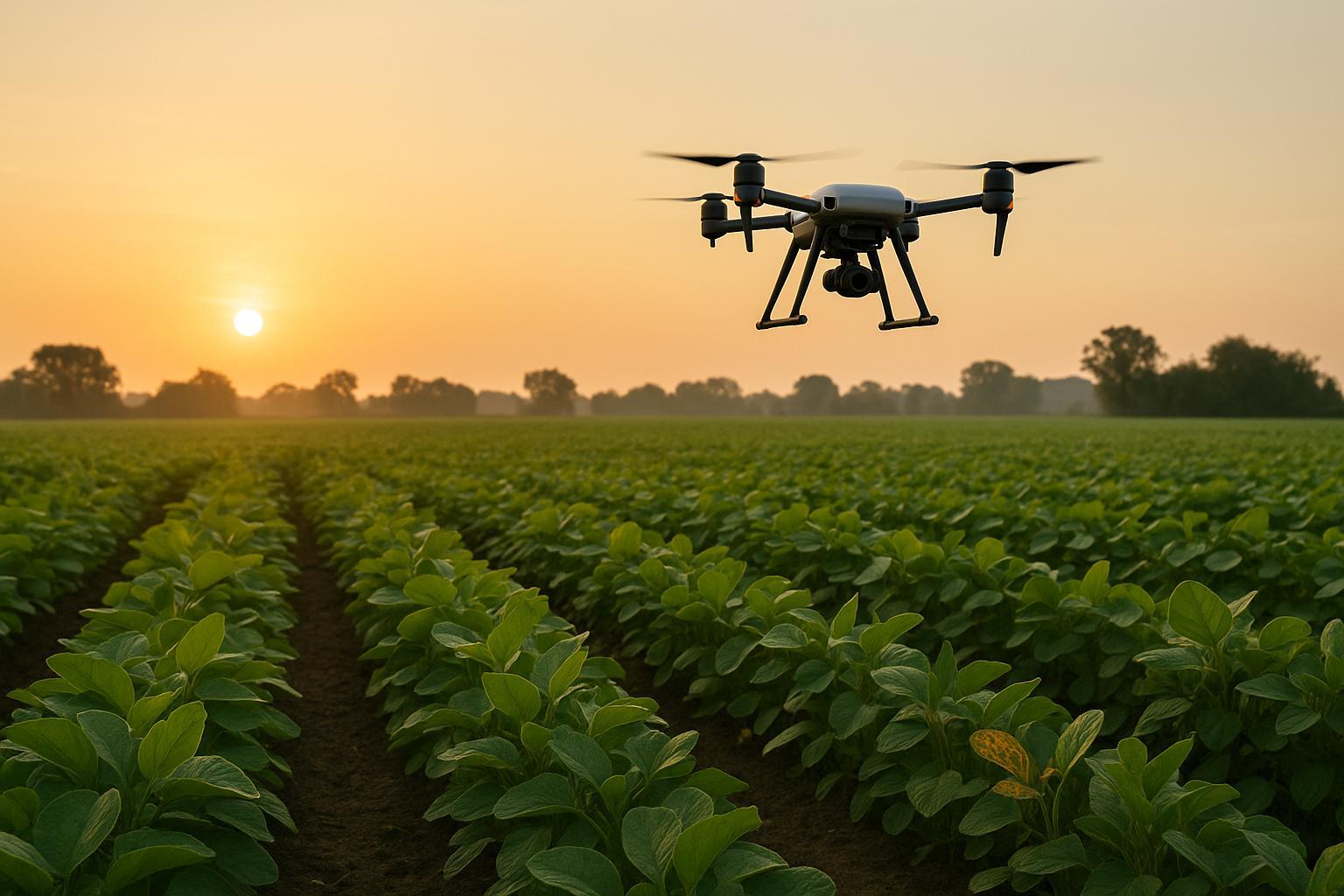
How AI Analyzes Drone Pest Data
AI-driven drones revolutionize pest management in agriculture by enabling early detection and precise treatment, enhancing crop health and sustainability.
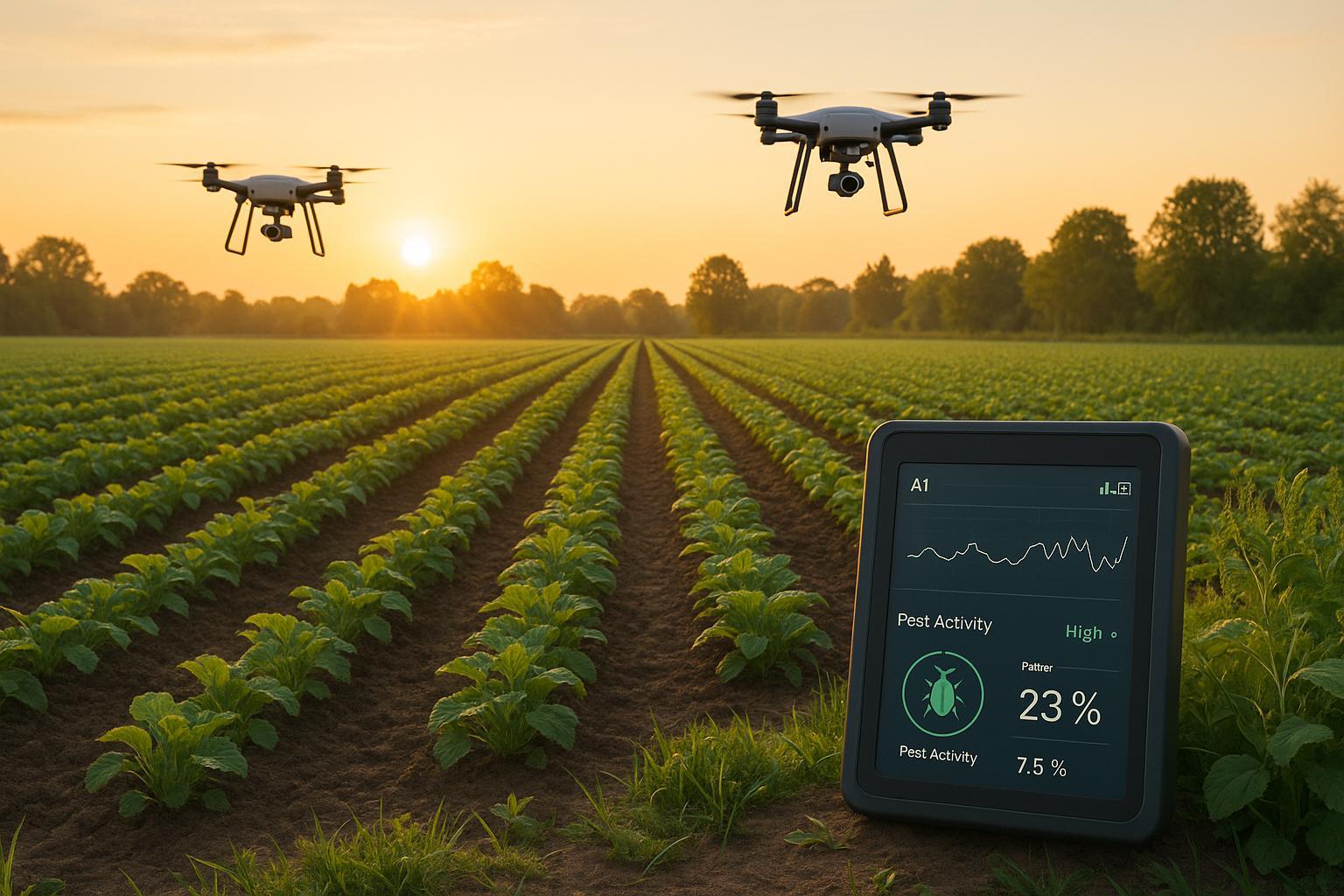
AI in Risk-Based Pest Control Systems
Explore how AI is revolutionizing pest control with predictive technologies that enhance efficiency and reduce pesticide use for farmers and gardeners.
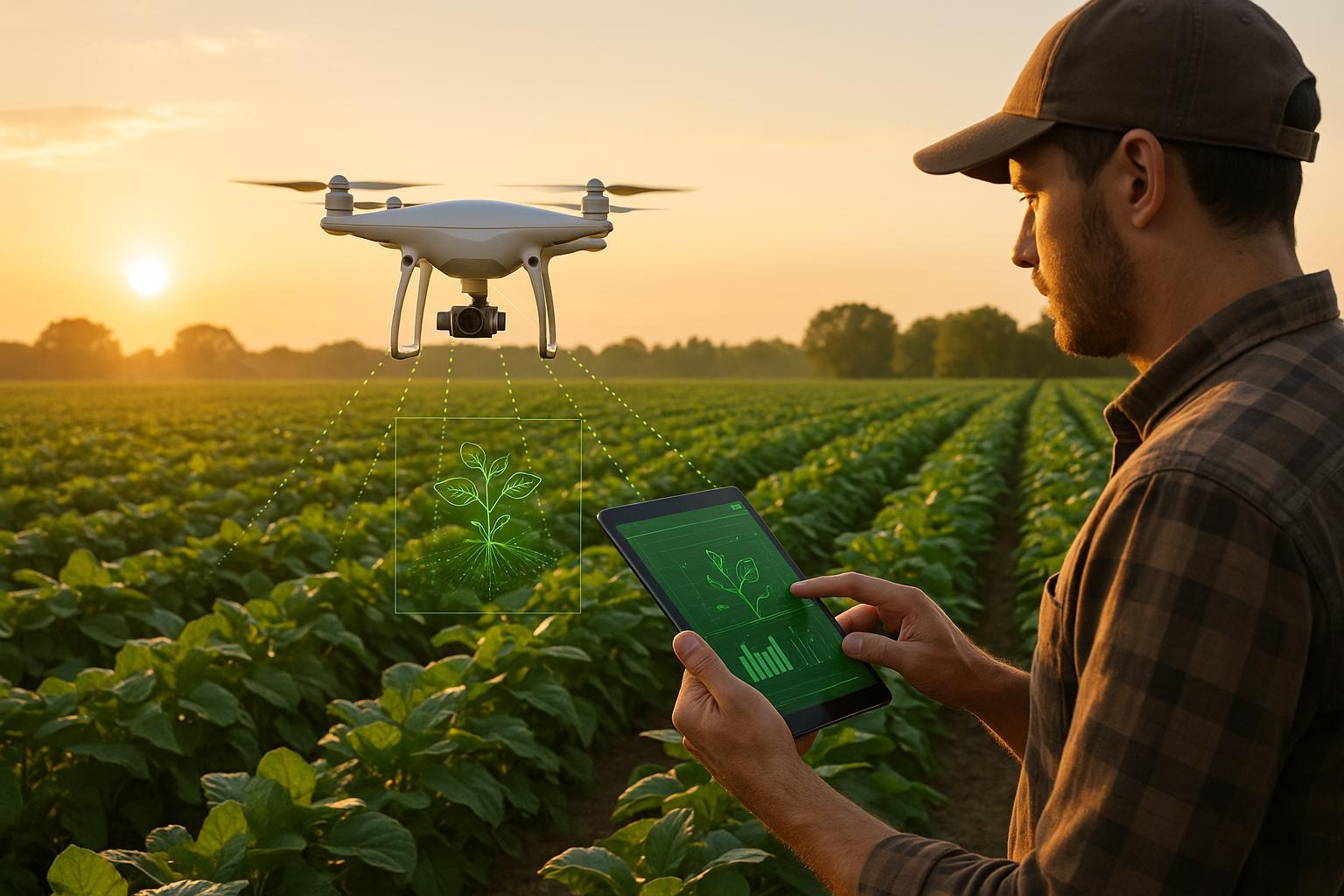
AI in Integrated Pest Management Systems
AI is revolutionizing pest management by enhancing detection, resource efficiency, and sustainability in agriculture, while addressing challenges of traditional methods.
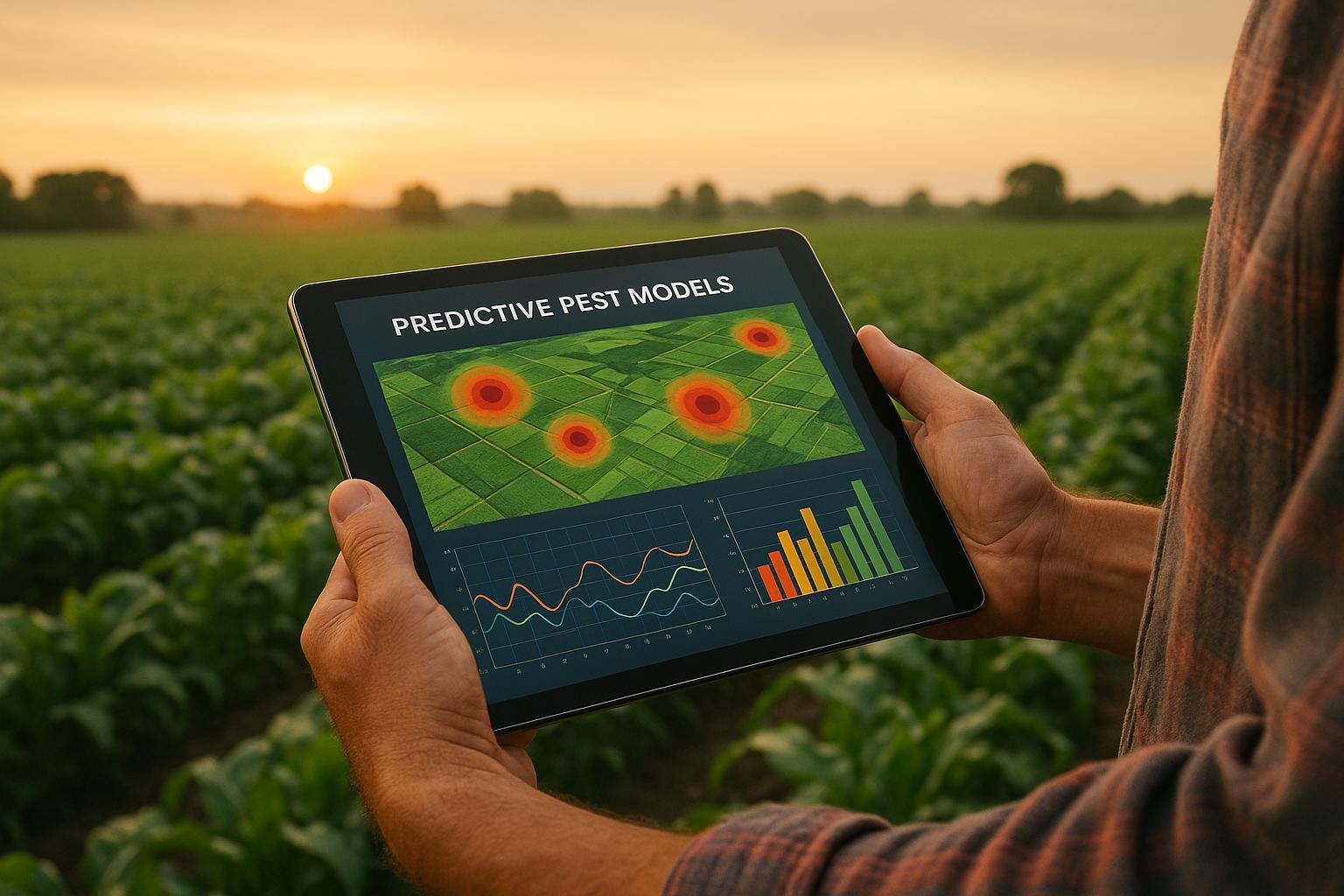
Predictive Pest Models: How They Work
Explore how predictive pest models harness data and AI to forecast infestations, reduce pesticide use, and enhance crop yields sustainably.
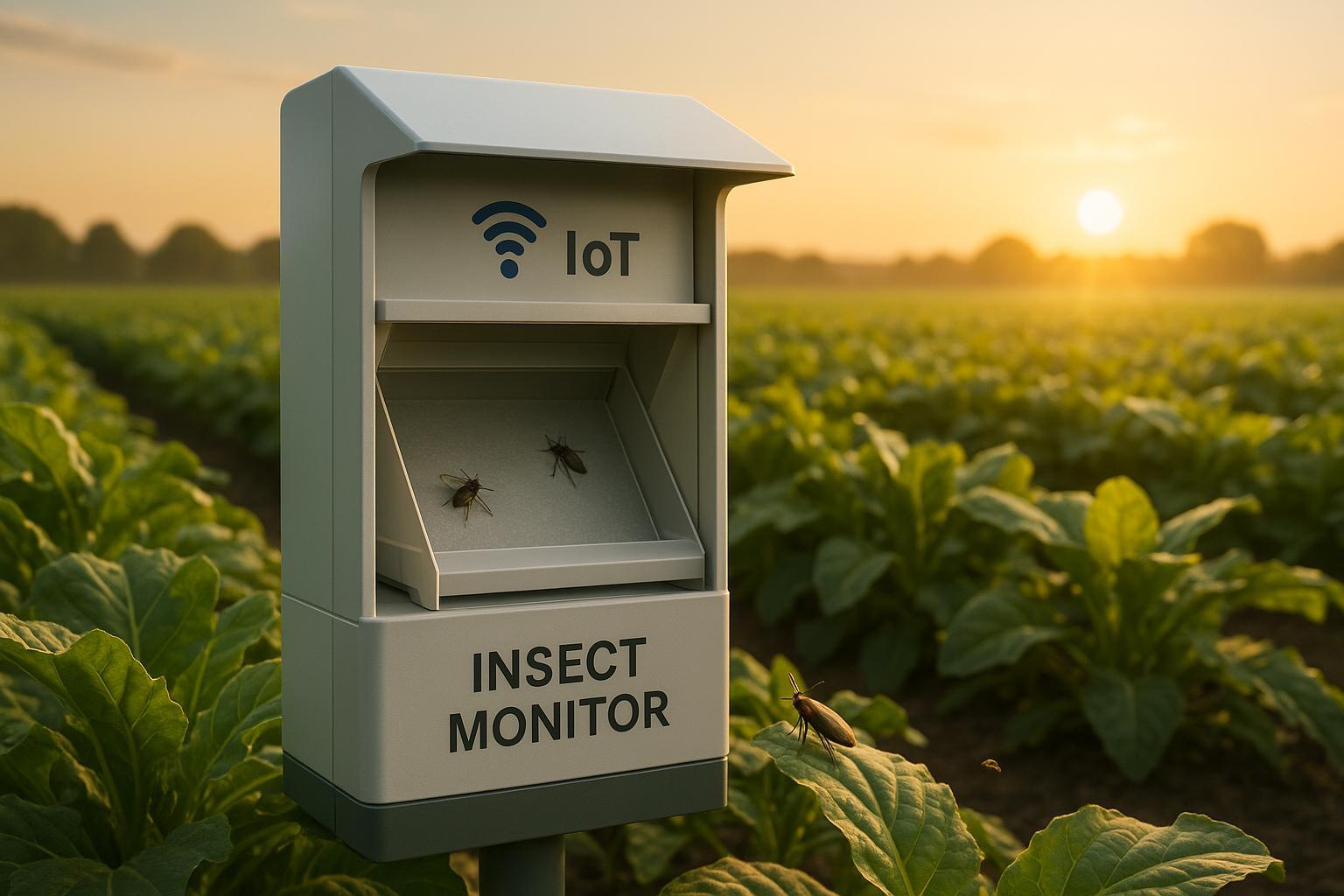
How IoT Calibration Improves Pest Monitoring Accuracy
Learn how IoT calibration enhances pest monitoring accuracy, reduces pesticide use, and ultimately leads to more effective pest management.
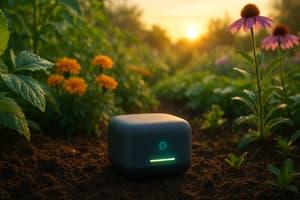
AI Pest Control: What Gardeners Need to Know
Explore how AI pest control revolutionizes gardening with early detection, targeted treatments, and eco-friendly practices for healthier plants.